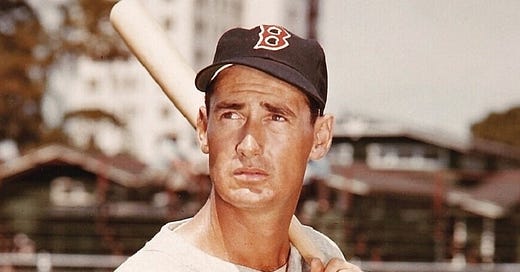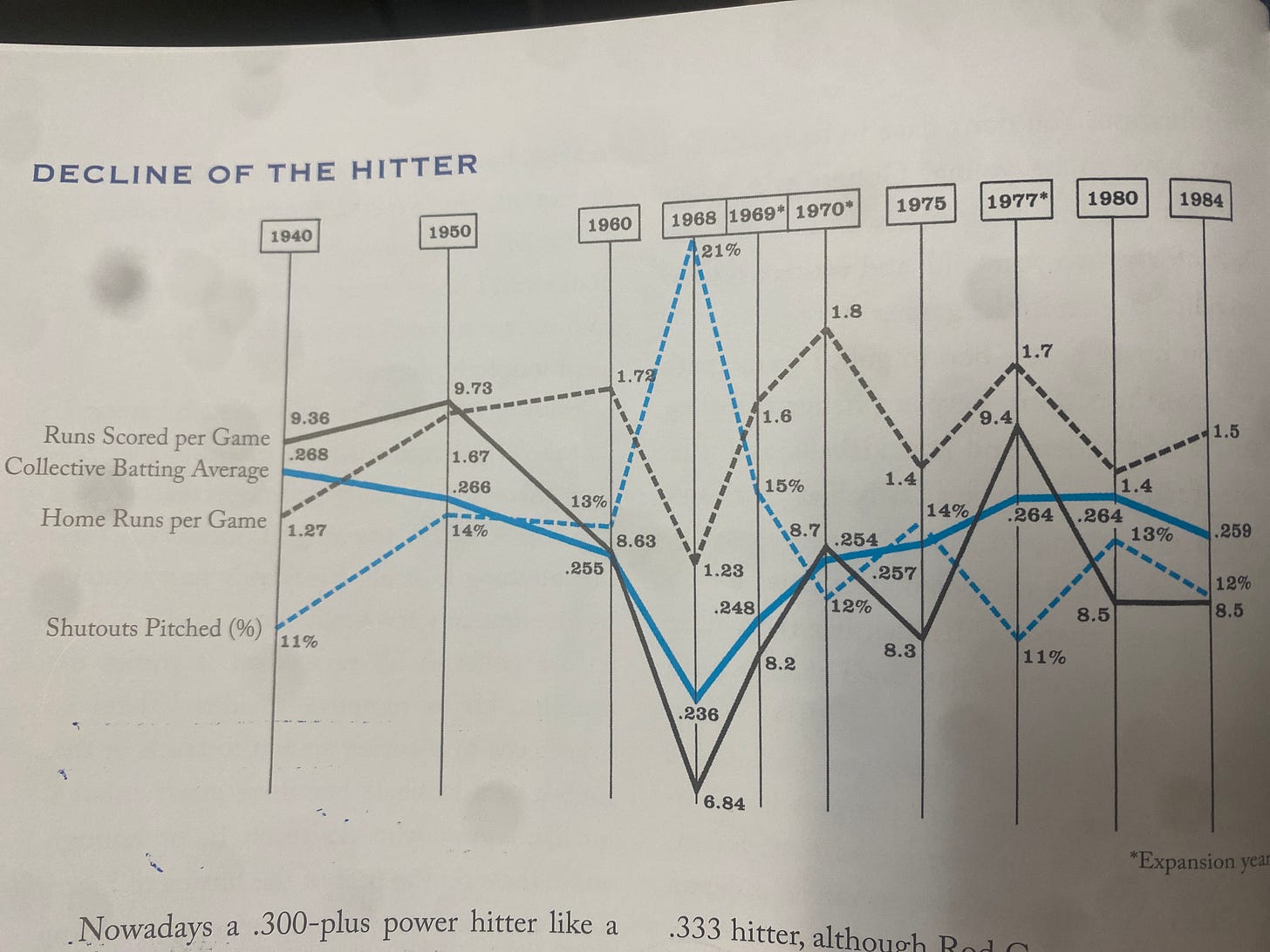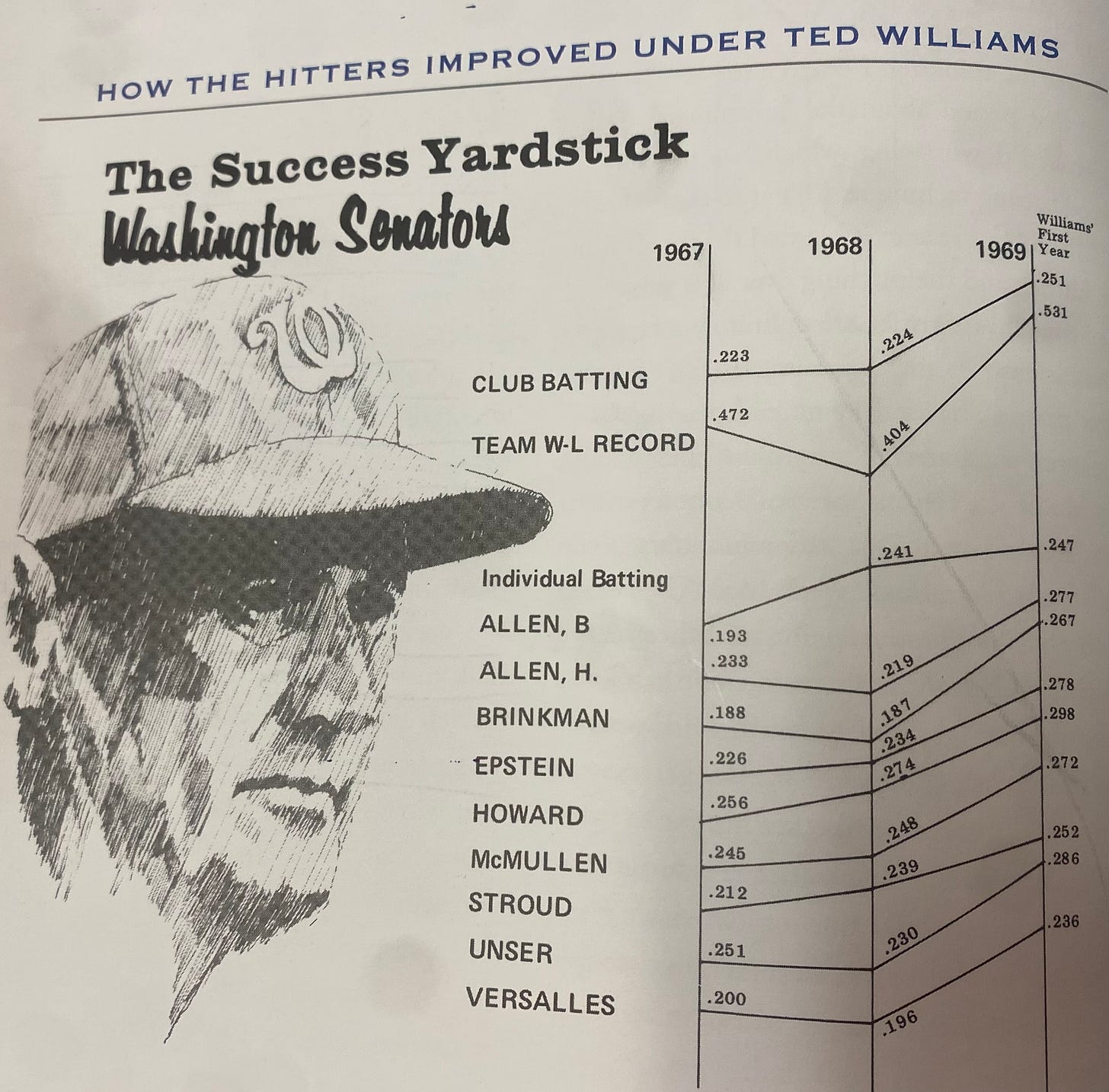The purpose of this was to look at Williams’ book, and use it to generate off-season discussion over a hot stove, cup of coffee, cold beer… whatever your vice in this off-season.
Baseball is crying for good hitters. Hitting is the most important part of the game; it is where the money is, and the fan interest. (page 3)
You can’t generate runs without putting the ball in play. The exorbitant numbers surrounding Juan Soto confirms this; being able to create runs every single game gives the team he goes to a chance to win. The fan interest has always been surrounding power; the sweet swing of Ken Griffey Jr, steroid use in the late 90’s through 2000’s, and the modern obsession with launch angle.
Decline of the hitter
This wonderful chart still has validity today. 8 of the top 10 teams in batting average made the playoffs, and those same 8 were in the top 10 in OPS.
It’s curious to see Williams discuss the variety of issues that are still relevant 35 years later. If two more expansion teams are added, that will diminish the overall quality of hitters in the batter’s box. The travel and schedule has to challenge a hitter, and I can’t imagine the new schedule format making that easier. As for the ballparks… I’d imagine Williams would have appreciated San Diego or Colorado more than Great American Ballpark.
How hitters improved under Ted Williams
Williams also goes through the Washington lineup and shows how his approach improve. Due to Williams’ stature in the game and a hitting coach being a new phenomenon at the time, it makes sense to assume why he became a manager instead of a hitting coach. His ability to articulate what he understood about hitting a baseball, especially compared to former players that were managers before him (Gil Hodges, Jim Lemon). The first thing that sticks out is what former players could have the knowledge of what to do combined with an ability to teach others how to do it.
Hitter, know yourself
Williams shares anecdotes about hitters trying different approaches, stances, and bats. What works for one person may work for the next hitter. He sees the position players as a community with a common goal (hitting the baseball) and a common opponent (pitchers), and combining the knowledge of multiple players to hone their craft together. This part is the first time I felt truly old reading the book. The individual nature of hitting a baseball has taught hitters to look inward or to neutral observers (video, private instructors, etc), at the expense of people that truly benefit the most your improved production.
Discussion
As promised, I’ve added a few questions to encourage healthy discussion in the comments section, your watering hole, but definitely not the office.
What adjustments between the book’s release in 1989 and today have made things harder for the hitter?
After Luis Arraez, who is the next most likely player to flirt with a .400 batting average?
Which player that’s retired in the last 5 years would make the best hitting coach?
Who is a player whose approach at the plate mystifies you?







I will always argue that hitting is more important than pitching. You can't win a game without scoring a run and you do that by hitting the baseball. I recognize there are ways to score without hitting the ball too but assume that's a low percentage. As a gray-bearded fan of the sport, I'd rather see more contact in the box than strike outs with the occasional HR. I'll stop here, short of a rant that would include my dislike of the DH and the joy of bunting.